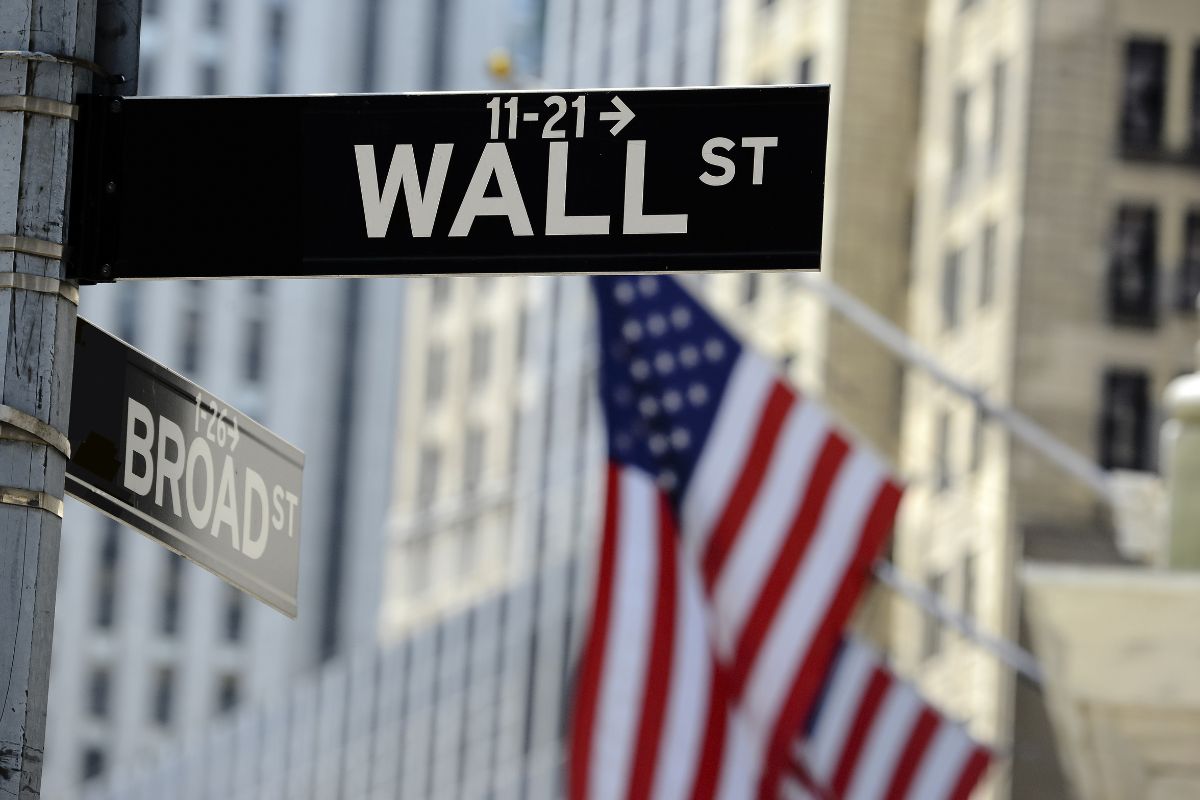Wall Street reshaping banking: 2008 crisis déjà vu
- April 3, 2023
- Jennifer Moore

NASDAQ and other stock exchanges were not the primary cause of the 2008 financial crisis. However, there were a few tremors from them. It was a combination of loose lending practices, the housing market bubble, financial institutions’ excessive risk-taking behavior, and more. In addition, the stock markets indirectly added fuel with their involvement in derivatives trading, transparency issues, subprime mortgage-backed securities, high-frequency trading, etc. Today, there is a similar indirect fuel of crushing the banking system like Signature Bank, SVB, and Silvergate. This article digs into how Wall Street and influential institutions caused the fall and how this could be a reflection of the 2008 financial crisis.
What’s Crushing The Banking System? Is 2008 In A Loop?
There are several grey areas in the recent bank contagion. Notable ones include:
- Silvergate had considerable risk in the investment portfolio, like the long-dated bonds that have lost most of their value due to the interest rate reaching sky-high. So, the balance sheet got shrapnel when a sudden cash outflow situation arose along with a failing investment portfolio.
- SVB has a similar problem with the rising interest rate that crushed their long-term treasury bonds.
- There is an apparent lack of transparency between the investors, and the bank management led to a knee-jerk withdrawal of billions.
Also Read: NASDAQ’s Exchange Broker Model is So Yesterday: Raj Chowdhury
The Bank Domino: Remnants of 2008?
Within days apart, Silvergate, Signature Bank, and SVB were announced to be closed permanently. The systemic danger was the reason the Federal banking regulators offered to close Signature Bank. The aftermath of these bank failures was driven smoothly without immediate landslides like returning deposits to customers, Feds making cash accessible throughout the discount window, and Bank Term Financial Program. The agencies have learned quite a few tricks from the mishaps of 2008. However, there was a direct hit on the customers’ perception of bank safety.
People are scrambling to get their money out while they can and think about hundreds of entities that would have missed their payroll. That’s millions of people in line for unemployment benefits. It would have been the opening credits for the 2023 financial crisis if it weren’t for the timely action of the Treasury and the Feds.
It would be a good place for the government to show that the banks should not take outrageous risks to privatize the gains while socializing the loss. However, if the government were to teach a moral lesson, it would indirectly affect all those small-time entities, neighborhood businesses, and blue-collar job holders who relied on banks that no one expected to fail.
The main problem for banks like PacWest, FRC, and others is that the technology and banking regulations are not in sync. The bank stocks that were once considered the goliaths are on their downfall. However, no concrete evidence exists that the entire banking system would decay. The bank stocks are still on the high, and the investors will receive good returns out of the commonly traded stocks of these banks.
Decoding the Impact Of Wall Street and Influential Investors
-
Widespread Panic
The shares of the banks fell tremendously, which spooked the investors who withdrew billions within hours. Small brokers and investors did not want to fall prey to market manipulations and followed suit as early as possible.
-
Putting the Blame on Crypto
All three banks were accepting crypto assets, and the stock market and Wall Street used them as good poster boys for sending anti-crypto messages. While every report shows that the main reason for the failure is the large uninsured deposits, increasing interest rates, or others, the propaganda still seems to be that the veteran banks jumped blindly into the crypto well. The collapse of crypto coins in the past year did have some reciprocations but cannot be determined as the primary cause.
-
Was Insider Trading Involved?
The involvement of short sellers is undeniable in the fallout of these tech-friendly banks. What’s also interesting is that the founders and venture capital investors were the first ones to drain out their accounts even before the tremors started to hit.
-
Trigger From Founders Fund?
Founders Fund, a venture capital firm established by Peter Thiel, moved its assets out of SVB. This is because the investment team was alerted about future solvency issues. Their withdrawal set out an avalanche that pushed out $42 billion, crashing the bank within days. This incident did trigger the entire domino effect.
-
Negligence from the End of Regulatory Bodies?
The bank shutdowns are aftershocks of the FTX crash but pointing out that de-banking crypto companies. Moreover, they are the best way to avoid these is political drama. If that is the moral high ground expected, then why didn’t the SEC and other powerful agencies protect the citizens from Celsius Network Fraud?
Interestingly, Signature Bank had the capital to stay afloat. However, though most of its estimates $110 billion worth of assets were uninsured. Yet, the governing agencies considered this crypto-backed bank a threat to the stability of the US economy. It was finally sold to New York Community Bancorp subsidiary, Flagstar Bank, in a $2.7 billion deal.
-
Berkshire Hathaway – Banks Going Under The Wall Street Roof
Berkshire Hathaway is on the pipeline to offer rescue financing to some of the banks that are struggling. During the 2008-09 financial crisis, Berkshire Hathaway invested in some bottom-dwelling banks. Buffet did the same with Goldman Sachs and made a similar move with BAC. However, the banks that are struggling now are not large but mid-sized.
If Berkshire Hathaway rescues a bank, Buffett would buy preferred shares and gain warrants for common stocks at a pre-determined value. If the bank gets saved, it will increase Berkshire Hathaway shares. Given the current stock price, the price-to-cash flow and price-to-book ratio would fall, leading to cheaper valuations.
The SVB Effect: Wading Through Muddy Waters
The latest events point out several potential flaws and areas of non-transparency in the recent acquisition deals of (SVB) UK. HSBC UK’s acquisition of SVB UK was announced on March 13, 2023. Thereafter, with no cost to taxpayers and depositors fully protected. However, a week later, on March 26, 2023, the FDIC announced that First Citizens BancShares would acquire SVB’s commercial banking business.
One of the main areas of concern is the lack of clarity regarding the FDIC’s role in SVB’s receivership. While First Citizens is acquiring $119 billion in deposits and $72 billion of SVB’s loans discounted by $16.5 billion, $90 billion of SVB’s securities will remain in receivership. Questions can be raised in regard to the FDIC’s decision to leave such a large portion of SVB’s assets in receivership and why the private banking business was not included in the deal.
Lack of Transparency
There is a lack of transparency around the FDIC’s equity appreciation rights. Therefore, it’s worth about $500 million and linked to First Citizens’ shares. It is unclear how these rights were determined and how the FDIC plans to use them in the future. This has led to analysts raising concerns about the fairness of this deal. In addition, questions about whether taxpayers are being adequately protected.
Another area of concern is the potential conflict of interest regarding the FDIC’s decision to approve the deal with First Citizens. The report notes that the CEO of First Citizens, Frank Holding Jr., is a member of the FDIC’s board of directors. This raises questions about the impartiality of the FDIC’s decision-making process. Moreover, whether Holding should have recused himself from the decision.
Conclusion
The banking industry has come a long way since 2008. Moreover, there are increasingly stringent regulations to improve consumer protection, accountability, and transparency. There are also reforms in place against predatory lending practices. As a result, the market is better equipped to deal with this crashing bank scenario than a decade ago. However, it would be better if there were more regulations to deal with the hiking interest rates. That is where all the AI tools of predictions are available. Thereafter, to all the investors rather than just the influential institutional ones.
Categories
- AI (6)
- Altcoins (10)
- Banking (10)
- Bitcoin (133)
- Bitcoin ETF (11)
- Bitcoin Price (30)
- Blockchain (47)
- Brokering World Hunger Away (16)
- Business (7)
- CBDC (11)
- COVID-19 (3)
- Crypto ATMs (1)
- Crypto Banking (15)
- Crypto Bill (1)
- Crypto broker platform (26)
- Crypto Investment (3)
- Crypto Markets (3)
- Crypto Payment (27)
- Crypto Prices (1)
- Crypto Trading (89)
- Cryptocurrency (371)
- Cryptocurrency Exchange (103)
- Data Visualization (2)
- Decentralized Finance (7)
- DeFi Payment (9)
- DEX (3)
- Digital Currency (22)
- Ethereum (2)
- FAQ (6)
- Finance (24)
- Financial Equality (4)
- Financial Freedom (8)
- Forex (24)
- ICO (1)
- Investment (11)
- Mining (3)
- News (66)
- NFTs (2)
- P2P (1)
- PayBitoPro (626)
- PayBitoPro Coin Listing (6)
- PayBitoPro Exchange (2)
- Post COVID Digital Transformation (1)
- Press Release (130)
- Privacy & Security (3)
- Real Estate (1)
- Stablecoin (4)
- Technology (14)
- Uncategorized (3)
- US Presidential Election (2)
- Utility Coin (1)
- Web3 Wallets (1)
- White Label Crypto Broker Solution (1)
- White Label Crypto Exchange (6)





